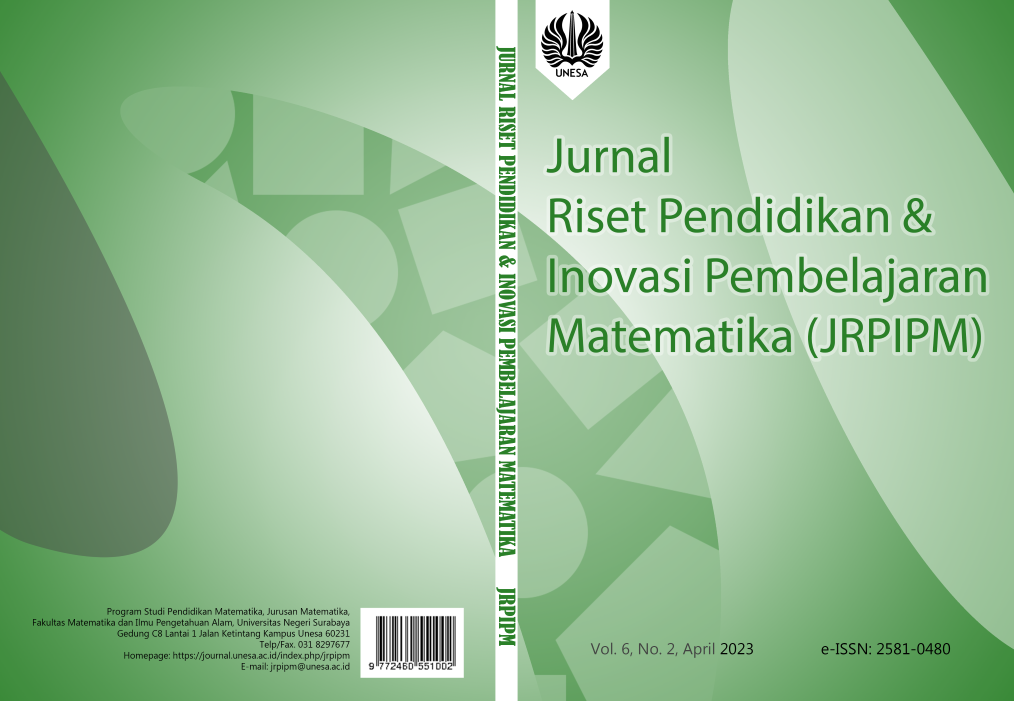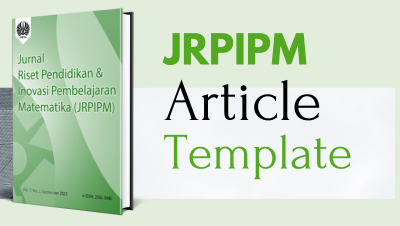Kinds of Mathematical Thinking Addressed in Geometry Research in Schools: A Systematic Review
DOI:
https://doi.org/10.26740/jrpipm.v6n2.p154-165Keywords:
Mathematical Thinking, Geometry, Systematic ReviewAbstract
Geometry is one of the content of mathematics which in many studies is associated with students' thinking abilities, such as critical thinking and reasoning abilities or others..This study aims to conduct a systematic review of the geometry research in school for identifying the types of mathematical thinking and their interconnections. We searched the Scopus database for articles published from 2003 to 2023 using relevant keywords. We applied the PRISMA method to select and evaluate the studies or articles based on the empirical data. We retrieved and evaluated data from the studies on the various styles of mathematical thinking evolved. Out of 166 titles that were initially obtained, only 10 titles passed the five stages of the systematic review protocol process. We identified 10 types of mathematical thinking that were discussed in the context of learning geometry at school: Creative Mathematical Reasoning (CMR), Computational thinking, Geometric reasoning, Geometric thinking van hiele theory, Geometric thinking (3D geometric thinking with representations), 3D geometry thinking, Visuo spatial reasoning, Geometry Spatial Reasoning, mathematical creative reasoning (MCR), and Inductive reasoning. We also found some connections of literature between these types of mathematical thinking, such as CMR and MCR, Geometric reasoning and Geometric thinking, and Visuo spatial reasoning and Geometry Spatial Reasoning. This systematic review provides an overview of the current state of research on geometry and reasoning in school mathematics and reveals some gaps and directions for future study. It also has implications for teachers who want to enhance their students’ mathematical thinking skills in geometry by exposing them to different types of mathematical thinking and their connections.
References
?lhan, A.. Analysis of the correlations between visual mathematics literacy perceptions, reasoning skills on geometric shapes and geometry performances of pre-service mathematics teachers. Participatory Educational Research. 2020; 8(1):90-108, ISSN 2148-6123. Available from: https://doi.org/10.17275/per.21.5.8.1
Buckley, J.. Investigating the use of spatial reasoning strategies in geometric problem solving. International Journal of Technology and Design Education. 2019; 29(2):341-362, ISSN 0957-7572. Available from: https://doi.org/10.1007/s10798-018-9446-3
Jain, S.. A visualization approach to multiplicative reasoning and geometric measurement for primary-school students-a pilot study. Mathematics Teaching-Research Journal. 2022; 14(5):48-65, ISSN 2573-4377
Seah, R.. Developing reasoning within a geometric learning progression: Implications for curriculum development and classroom practices. Australian Journal of Education. 2021; 65(3):248-264, ISSN 0004-9441. Available from: https://doi.org/10.1177/00049441211036532
Lithner, J.. Principles for designing mathematical tasks that enhance imitative and creative reasoning. ZDM - Mathematics Education. 2017; 49(6):937-949, ISSN 1863-9690. Available from: https://doi.org/10.1007/s11858-017-0867-3
Jonsson, B.. Creative and algorithmic mathematical reasoning: effects of transfer-appropriate processing and effortful struggle. International Journal of Mathematical Education in Science and Technology. 2016; 47(8):1206-1225, ISSN 0020-739X. Available from: https://doi.org/10.1080/0020739X.2016.1192232
Jonsson, B.. Creative Mathematical Reasoning: Does Need for Cognition Matter?. Frontiers in Psychology. 2022; 12, ISSN 1664-1078. Available from: https://doi.org/10.3389/fpsyg.2021.797807
Jonsson, B.. Gaining Mathematical Understanding: The Effects of Creative Mathematical Reasoning and Cognitive Proficiency. Frontiers in Psychology. 2020; 11, ISSN 1664-1078. Available from: https://doi.org/10.3389/fpsyg.2020.574366
Wirebring, L.K.. An fMRI intervention study of creative mathematical reasoning: behavioral and brain effects across different levels of cognitive ability. Trends in Neuroscience and Education. 2022; 29, ISSN 2211-9493. Available from: https://doi.org/10.1016/j.tine.2022.100193
Marsitin, R.. Creative Mathematical Reasoning Process of Climber Students in Solving Higher Order Thinking Skills Geometry Problems. TEM Journal. 2022; 11(4):1877-1886, ISSN 2217-8309. Available from: https://doi.org/10.18421/TEM114-56
Kusaeri, K.. Enhancing creative reasoning through mathematical task: The quest for an ideal design. International Journal of Evaluation and Research in Education. 2022; 11(2):482-490, ISSN 2252-8822. Available from: https://doi.org/10.11591/ijere.v11i2.22125
Downloads
Published
How to Cite
Issue
Section
 Abstract views: 564
,
Abstract views: 564
, PDF Downloads: 488
PDF Downloads: 488







